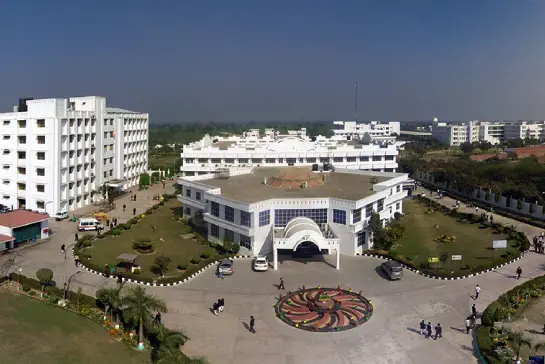A PhD research proposal is more than just an academic formality — it’s your gateway to securing admission into a doctoral program. It represents your ability to define a research problem, demonstrate originality, and plan a feasible project aligned with your field of study.
Universities across India and abroad require applicants to submit a strong research proposal during PhD admission to evaluate their preparedness, writing skills, and research vision.
In this comprehensive guide, we’ll walk you through how to write a winning PhD research proposal step by step — including structure, format, tips, and common mistakes to avoid.
Table of Contents
What is a PhD Research Proposal?
A PhD research proposal is a structured document outlining your intended research project for doctoral study. It presents the what, why, and how of your proposed research:
- What: The topic and objectives of your research.
- Why: The significance, background, and contribution to knowledge.
- How: The methods, data collection, and analysis you’ll use.
It usually ranges between 1,500–3,000 words, depending on university guidelines.
A well-written PhD research proposal convinces supervisors that:
- Your topic is original and feasible.
- You understand the existing literature.
- You have the skills and resources to complete it.
Importance of a PhD Research Proposal
The proposal serves as the foundation of your PhD journey. Here’s why it’s crucial:
| Purpose | Description |
|---|---|
| Academic Evaluation | Universities assess your research preparedness and writing clarity. |
| Supervisor Matching | Helps departments match you with a relevant guide or supervisor. |
| Funding Consideration | Strong proposals are often essential for scholarships or fellowships. |
| Project Feasibility | Demonstrates that your topic is manageable within 3–5 years. |
| Admission Decision | Plays a decisive role in your selection for PhD admission. |
PhD Research Proposal Format (Standard Structure)
Though universities may have their own guidelines, a typical PhD proposal format includes the following sections:
| Section | Description |
|---|---|
| 1. Title Page | Includes title, your name, university, supervisor (if applicable), and date. |
| 2. Abstract | A 200–300 word summary of your proposed research. |
| 3. Introduction | Overview of the topic, background, and research rationale. |
| 4. Research Problem / Questions | Clearly defined research questions or hypotheses. |
| 5. Objectives | List 3–5 specific aims or goals of your research. |
| 6. Literature Review | Discuss key theories, gaps, and prior studies relevant to your topic. |
| 7. Research Methodology | Describe your data collection methods, tools, and analysis techniques. |
| 8. Expected Outcomes | Outline the contribution of your research to existing knowledge. |
| 9. Timeline | Break down your research stages over the PhD duration. |
| 10. References | Cite all the works referenced in your proposal (APA/MLA/Harvard style). |
Step-by-Step Guide: How to Write a Winning PhD Research Proposal
Step 1: Choose a Clear and Relevant Topic
Select a research area that:
- Matches your academic background.
- Addresses a current problem or research gap.
- Aligns with your potential supervisor’s expertise.
Example Topics:
- “Artificial Intelligence in Higher Education Policy Development”
- “Climate Adaptation Strategies in Rural India”
- “Digital Transformation in Small-Scale Businesses”
Tip: Choose a topic you are passionate about — you’ll spend years exploring it.
Step 2: Write a Strong Introduction
Your introduction should capture interest while giving context.
Include:
- Background of the problem.
- Why this issue is important.
- Brief mention of previous studies.
- The research gap you plan to address.
Example: “Despite extensive studies on digital education, limited research exists on how AI tools enhance critical thinking in Indian universities. This study seeks to bridge that gap.”
Step 3: Define the Research Problem and Objectives
Frame your research problem clearly and concisely.
Research Problem Example:
“What impact does remote learning have on the academic performance of postgraduate students in urban India?”
Objectives Example:
- To assess student engagement in online classes.
- To measure academic performance trends pre- and post-pandemic.
- To identify challenges and propose digital learning models.
Step 4: Conduct a Focused Literature Review
This is one of the most important parts of your PhD research proposal.
- Summarize key studies and their findings.
- Identify existing research gaps.
- Explain how your study builds on or differs from prior work.
| Aspect | Example |
|---|---|
| Thematic Focus | “E-learning adoption and challenges in developing countries” |
| Gap Identified | “Limited focus on postgraduate-level experiences” |
| Contribution | “The study expands the literature by focusing on postgraduate digital learning outcomes.” |
Step 5: Describe Your Research Methodology
Your methodology should show how you’ll conduct your study.
| Element | Description |
|---|---|
| Research Design | Qualitative, quantitative, or mixed-method approach. |
| Data Collection | Surveys, interviews, experiments, or secondary data. |
| Sampling | Define sample size and criteria. |
| Data Analysis | Mention software or statistical tools (SPSS, NVivo, etc.). |
| Ethical Considerations | Data privacy, consent, and institutional approval. |
Example: “A mixed-method approach will be used, combining survey data from 200 postgraduate students and semi-structured interviews with 10 faculty members.”
Step 6: State Expected Outcomes and Contributions
Discuss what new knowledge or innovation your research will contribute.
Examples of contributions:
- Develop a new theoretical framework.
- Offer policy recommendations.
- Improve existing industry practices.
Example: “The research aims to develop a hybrid learning effectiveness model applicable across Indian higher education systems.”
Step 7: Create a Research Timeline
PhD programs typically last 3–5 years. Include a tentative timeline as part of your proposal.
| Year | Research Stage |
|---|---|
| Year 1 | Literature review, proposal refinement, coursework. |
| Year 2 | Data collection, fieldwork, interim report submission. |
| Year 3 | Data analysis, draft chapters, conferences. |
| Year 4 | Final writing, submission, and viva preparation. |
Step 8: Write a Strong Conclusion
End your PhD research proposal by:
- Reinforcing the significance of your research.
- Emphasizing originality.
- Highlighting potential practical applications.
Example: “This study will contribute to digital education policy by developing a scalable framework for blended learning implementation in higher education.”
PhD Research Proposal Example Summary
Here’s a brief outline of how a final proposal may look:
| Section | Example Content |
|---|---|
| Title | “Digital Learning and Academic Performance in Indian Universities” |
| Abstract | 250 words summarizing problem, objectives, methods, and outcomes. |
| Introduction | Background on online learning adoption post-COVID. |
| Problem Statement | Low engagement rates among postgraduate online learners. |
| Objectives | Evaluate engagement, identify challenges, and propose improvements. |
| Literature Review | Analysis of 20+ key studies on digital pedagogy and learning analytics. |
| Methodology | Mixed-method, 200 participants, online surveys and interviews. |
| Expected Results | Develop framework to enhance student performance. |
| Timeline | 3 years, with periodic publications. |
Pro Tips for Writing a Winning PhD Research Proposal
- Follow the University’s Guidelines: Each university may have a different word limit, structure, or citation style.
- Be Realistic: Choose a topic and scope that can be completed within your PhD timeframe.
- Demonstrate Originality: Show how your research fills a knowledge gap or offers a new perspective.
- Use Clear, Concise Language: Avoid jargon and complex sentences — clarity shows mastery.
- Cite Sources Properly: Use a consistent citation format (APA, MLA, or Harvard).
- Proofread and Edit Thoroughly: Grammatical and formatting errors create a poor impression.
- Seek Feedback: Get your draft reviewed by mentors, peers, or professionals before submission.
Common Mistakes to Avoid
| Mistake | Why It Hurts |
|---|---|
| Vague Research Problem | Lacks focus and clarity. |
| No Clear Methodology | Raises doubts about feasibility. |
| Overly Ambitious Scope | Unrealistic goals within time limits. |
| Weak Literature Review | Shows poor understanding of existing studies. |
| Lack of Citations | Reduces academic credibility. |
Conclusion
Writing a PhD research proposal is both an art and a science. It requires clarity, structure, originality, and academic depth. A well-crafted proposal reflects your critical thinking skills and sets the foundation for your entire doctoral journey.
Remember, your PhD research proposal isn’t just a formal document — it’s a roadmap of your intellectual curiosity and commitment to contribute meaningfully to your field.
By following the steps, structure, and writing tips in this guide, you’ll be well-equipped to submit a strong, compelling proposal that increases your chances of PhD admission success in 2026.























